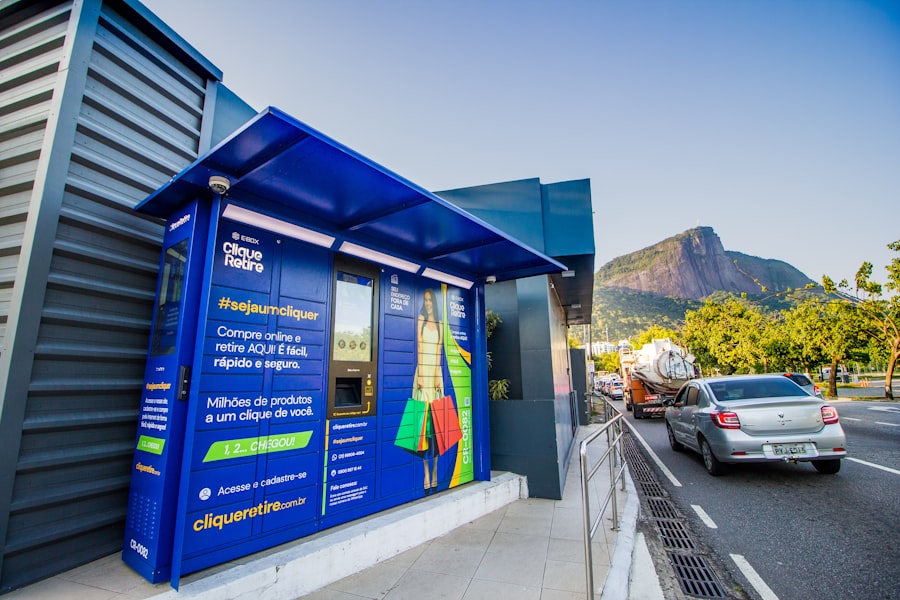The advent of 5G technology marks a significant leap forward in the realm of telecommunications, promising to revolutionize how we connect, communicate, and interact with the world around us. As the fifth generation of mobile networks, 5G is designed to provide faster data speeds, lower latency, and greater capacity compared to its predecessors. This new technology operates on a range of frequencies, including millimeter waves, which allow for the transmission of vast amounts of data at unprecedented speeds.
With the potential to reach download speeds of up to 10 gigabits per second, 5G is not just an incremental improvement; it represents a paradigm shift that could enable a plethora of new applications and services across various sectors. Moreover, the implications of 5G extend far beyond mere enhancements in mobile connectivity. It serves as a foundational technology that can support the burgeoning Internet of Things (IoT), where billions of devices are interconnected, sharing data in real-time.
This capability is crucial for developing smart cities, enhancing healthcare systems, and improving industrial processes. As we delve deeper into the impact of 5G technology, it becomes evident that its influence will permeate numerous aspects of daily life, driving innovation and fostering sustainable practices that can address some of the most pressing challenges facing society today.
Key Takeaways
- 5G technology promises faster speeds, lower latency, and increased connectivity for a wide range of applications.
- 5G’s impact on sustainable applications includes enabling smart grids, improving energy efficiency, and reducing carbon emissions.
- Advancements in smart cities with 5G technology include enhanced public safety, efficient transportation systems, and improved waste management.
- Enhanced connectivity for renewable energy through 5G enables better monitoring and management of energy production and distribution.
- 5G technology improves efficiency in agriculture through precision farming, real-time monitoring, and autonomous machinery.
- Revolutionizing transportation and logistics with 5G includes enabling autonomous vehicles, improving traffic management, and enhancing supply chain operations.
- 5G plays a crucial role in environmental monitoring by enabling real-time data collection, analysis, and response to environmental changes.
- In conclusion, 5G technology has the potential to significantly impact sustainability and environmental conservation, and its future outlook is promising for further advancements in these areas.
5G’s Impact on Sustainable Applications
The integration of 5G technology into various sectors has the potential to significantly bolster sustainable applications, paving the way for more efficient resource management and reduced environmental impact. One of the most notable advantages of 5G is its ability to facilitate real-time data collection and analysis, which is essential for optimizing energy consumption and minimizing waste. For instance, smart grids powered by 5G can monitor energy usage patterns and adjust supply accordingly, leading to a more balanced distribution of resources.
This not only enhances energy efficiency but also supports the integration of renewable energy sources, such as solar and wind power, into the grid. In addition to energy management, 5G can play a pivotal role in promoting sustainable practices in agriculture. By enabling precision farming techniques through IoT devices, farmers can monitor soil conditions, crop health, and weather patterns with remarkable accuracy.
This data-driven approach allows for targeted interventions that reduce water usage, minimize pesticide application, and optimize fertilizer use. As a result, agricultural practices become more sustainable, contributing to food security while simultaneously protecting the environment. The synergy between 5G technology and sustainable applications underscores the potential for a greener future, where innovation and environmental stewardship go hand in hand.
Advancements in Smart Cities
The concept of smart cities has gained traction in recent years, driven by the need for urban areas to become more efficient, livable, and sustainable. 5G technology is at the forefront of this transformation, providing the necessary infrastructure to support a wide array of smart city initiatives. With its high-speed connectivity and low latency, 5G enables seamless communication between various urban systems, such as traffic management, public transportation, and waste management.
For example, real-time data from connected vehicles can be used to optimize traffic flow, reducing congestion and lowering emissions in densely populated areas. Furthermore, 5G facilitates enhanced public safety measures through advanced surveillance systems and emergency response technologies. Smart sensors can monitor environmental conditions and detect hazards such as air pollution or flooding, allowing city officials to respond swiftly and effectively.
Additionally, citizens can engage with their local governments through mobile applications that provide information on city services and report issues in real-time. This level of connectivity fosters a sense of community engagement and accountability while ensuring that urban environments are equipped to meet the challenges of the future.
Enhanced Connectivity for Renewable Energy
As the world shifts towards renewable energy sources to combat climate change, 5G technology plays a crucial role in enhancing connectivity within this sector. The ability to transmit large volumes of data quickly and reliably allows for better integration of renewable energy systems into existing infrastructures. For instance, wind farms and solar panels equipped with IoT sensors can communicate their performance metrics in real-time, enabling operators to make informed decisions about energy production and distribution.
This level of connectivity ensures that renewable energy sources can be utilized more effectively, reducing reliance on fossil fuels and promoting a cleaner energy landscape. Moreover, 5G facilitates the development of decentralized energy systems where consumers can generate their own power through solar panels or wind turbines. These systems can be connected to a larger grid via 5G networks, allowing for peer-to-peer energy trading among users.
This innovative approach not only empowers individuals to take control of their energy consumption but also contributes to a more resilient energy system overall. By harnessing the capabilities of 5G technology, the renewable energy sector can achieve greater efficiency and sustainability, ultimately leading to a reduction in greenhouse gas emissions and a more sustainable future.
Improving Efficiency in Agriculture
The agricultural sector stands to benefit immensely from the implementation of 5G technology, particularly through advancements in precision farming practices. By leveraging high-speed connectivity and real-time data analytics, farmers can optimize their operations in ways that were previously unimaginable. For example, drones equipped with sensors can monitor crop health across vast fields, providing farmers with detailed insights into soil conditions and plant growth.
This information allows for targeted interventions that minimize resource use while maximizing yield—an essential consideration as global food demand continues to rise. Additionally, 5G enables the automation of various agricultural processes through smart machinery that can communicate with one another seamlessly. Tractors and harvesters equipped with IoT devices can share data about field conditions and operational efficiency, allowing for coordinated efforts that enhance productivity.
This level of automation not only reduces labor costs but also minimizes environmental impact by ensuring that resources such as water and fertilizers are used judiciously. As agriculture becomes increasingly reliant on technology, 5G serves as a critical enabler for sustainable practices that can help feed a growing population while preserving the planet’s resources.
Revolutionizing Transportation and Logistics
The transportation and logistics sectors are on the brink of transformation thanks to the capabilities offered by 5G technology. With its ultra-reliable low-latency communication (URLLC), 5G enables real-time tracking and monitoring of goods throughout the supply chain. This level of visibility allows companies to optimize their logistics operations by predicting delays, managing inventory more effectively, and reducing waste.
For instance, smart shipping containers equipped with sensors can relay information about temperature and humidity levels during transit, ensuring that perishable goods are maintained under optimal conditions. Moreover, 5G technology is set to revolutionize transportation systems through the development of autonomous vehicles. These vehicles rely on constant communication with other vehicles and infrastructure to navigate safely and efficiently.
With 5G’s high-speed connectivity, autonomous cars can process vast amounts of data from their surroundings in real-time, making split-second decisions that enhance safety and reduce traffic congestion. As cities embrace smart transportation solutions powered by 5G, we can expect a significant reduction in carbon emissions and improved overall efficiency in urban mobility.
5G’s Role in Environmental Monitoring
Environmental monitoring is becoming increasingly vital as we face pressing challenges such as climate change and biodiversity loss. 5G technology offers unprecedented opportunities for enhancing our ability to monitor environmental conditions accurately and in real-time. By deploying a network of connected sensors across various ecosystems—ranging from forests to urban areas—scientists and policymakers can gather critical data on air quality, water levels, soil health, and wildlife populations.
This wealth of information enables more informed decision-making regarding conservation efforts and resource management. Furthermore, 5G facilitates advanced predictive analytics that can help anticipate environmental changes before they occur. For example, machine learning algorithms can analyze historical data alongside real-time inputs from connected sensors to forecast natural disasters such as floods or wildfires.
This proactive approach allows communities to prepare for potential threats more effectively, ultimately saving lives and minimizing damage to property and ecosystems. As we harness the power of 5G for environmental monitoring, we move closer to achieving a sustainable balance between human activity and the natural world.
Conclusion and Future Outlook
In conclusion, the emergence of 5G technology heralds a new era characterized by enhanced connectivity and transformative applications across various sectors. Its impact on sustainable practices is particularly noteworthy; from optimizing energy consumption in smart grids to revolutionizing agriculture through precision farming techniques, 5G has the potential to drive significant advancements toward a more sustainable future. As cities evolve into smart environments powered by this cutting-edge technology, we can expect improvements in public safety, transportation efficiency, and overall quality of life for residents.
Looking ahead, the future outlook for 5G technology is promising yet complex. While its benefits are clear, challenges such as infrastructure development, cybersecurity concerns, and equitable access must be addressed to fully realize its potential. As stakeholders across industries collaborate to overcome these hurdles, we stand on the brink of a technological revolution that could reshape our world for generations to come.
Embracing this change will require not only innovation but also a commitment to sustainability—ensuring that as we advance technologically, we do so with an eye toward preserving our planet for future generations.
If you’re interested in how emerging technologies are enhancing our capabilities, you might find the article on TrustedReviews’ expert reviews of the latest technology particularly enlightening. This piece dives into various technological advancements, providing insights that could complement your understanding of how 5G is revolutionizing connectivity, especially in sustainable applications. By exploring expert reviews, you can gain a deeper appreciation of the potential and practical applications of new tech like 5G in various sectors.
FAQs
What is 5G technology?
5G technology is the fifth generation of mobile network technology, offering faster speeds, lower latency, and increased capacity compared to previous generations.
How is 5G changing connectivity in sustainable applications?
5G is enabling sustainable applications by providing faster and more reliable connectivity for smart cities, renewable energy systems, and environmental monitoring, leading to more efficient and sustainable operations.
What are some examples of sustainable applications benefiting from 5G technology?
Examples of sustainable applications benefiting from 5G technology include smart grid systems for efficient energy distribution, connected transportation for reduced emissions, and precision agriculture for optimized resource usage.
How does 5G contribute to environmental sustainability?
5G contributes to environmental sustainability by enabling the development and deployment of innovative technologies that can help reduce energy consumption, minimize waste, and improve overall resource efficiency.
What are the potential challenges of implementing 5G in sustainable applications?
Challenges of implementing 5G in sustainable applications include the need for infrastructure upgrades, ensuring equitable access to 5G technology, and addressing potential environmental impacts of increased connectivity.



